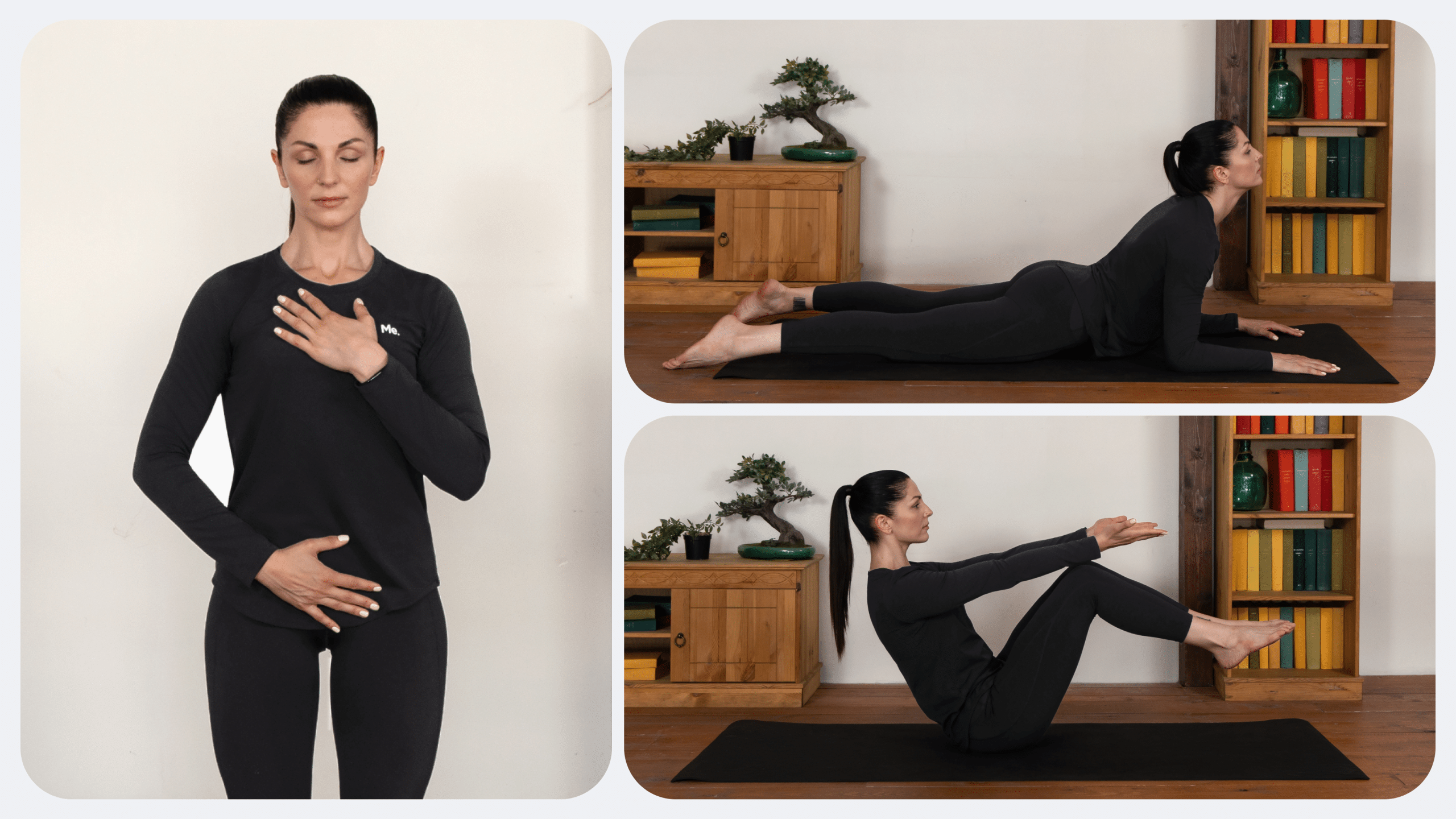Rehabilitation is the process of helping individuals regain maximum functionality following an injury, illness, or surgery.
During rehab sessions, a variety of techniques are used for stimulating the body’s healing processes and improving physical capabilities. You’ll work with professionals who’ll help develop a personalized treatment plan to achieve your goals.
Therapeutic exercise and therapeutic activity are two terms that are commonly used in rehab settings. They share similar objectives such as promoting mobility, reducing pain, and restoring function.
As they share similarities, it’s easy to be confused about their distinct purposes and applications.
However, each term represents a specific approach in the broader field of rehabilitation, and understanding the nuances between them can significantly enhance your journey to recovery.
What Is Therapeutic Exercise?
Therapeutic exercise is a physical activity that aims to restore and improve physical function. It is typically prescribed by a healthcare professional, such as a physiotherapist, based on the specific needs and limitations of an individual (13).
Therapeutic exercise can be used for addressing a wide range of conditions, such as musculoskeletal injuries, neurological disorders, and cardiovascular diseases.
The exercises are typically designed to target specific muscle groups and joints, gradually increasing in intensity and difficulty over time.
The two most common types of therapeutic exercise are active and passive. There is a third type that is called active-assisted, which combines features of both, but the focus here will be on the standard active and passive variations.
Active exercises involve a person actively performing movements, while passive exercises involve a therapist or device assisting with the movement.
Some common examples of therapeutic exercises include:
- Strengthening exercises – to improve muscle strength and endurance, e.g. resistance training with weights or resistance bands (12).
- Range of motion exercises (also called flexibility exercises) – to increase joint mobility and flexibility, e.g. stretches or yoga (5)
- Balance training – to enhance stability and prevent falls, e.g. standing on one leg or using a balance board (14)
- Cardiovascular exercises (also called endurance exercises) – to improve heart health and overall fitness level, e.g. walking, cycling, or swimming (6).
The key difference between therapeutic exercise and other forms of exercise is that it is carefully designed and tailored for a specific therapeutic purpose.
This means the exercises are chosen based on an individual’s current physical abilities and targeted toward their specific rehabilitation goals.
Lean and toned up body isn’t just a far-fetched fantasy. Check out the BetterMe app and watch it propel your weight loss journey into high gear!
What Is the Difference Between Exercise and Exercise Therapy?
Exercise is a broad term that refers to any physical activity that is performed to maintain or improve health and fitness. It includes various forms of physical activities such as running, weightlifting, dancing, and sports (10).
At the same time, exercise therapy is a more specialized form of exercise that involves using specific exercises for treating or managing a medical condition, injury, or surgery (17).
What Is Meant by Therapeutic Activity?
Therapeutic activities in physical therapy refers to a wide range of activities that promote physical movement and help achieve therapeutic goals.
Unlike therapeutic exercise, it does not have a strict structure or set of prescribed movements. Instead, it involves engaging in various activities that are both enjoyable and beneficial for the individual’s recovery.
Therapeutic activities can include sports, hobbies, leisure activities, or even everyday tasks such as cooking or gardening.
These activities can be modified to fit an individual’s abilities and limitations, which makes them accessible and enjoyable for people of all ages and physical conditions.
The key difference between therapeutic exercise and activity is that therapeutic activity is focused on overall physical wellness and enjoyment, rather than targeting specific rehabilitation goals.
In some cases, therapeutic exercise and activities may overlap. For example, a person who is recovering from a knee injury may engage in both strengthening exercises (therapeutic exercise) and cycling (therapeutic activity) as a means of improving strength and mobility in their injured knee while also enjoying the physical and mental benefits of cycling.
In addition, you may see overlap in what a specific activity is considered. For example, depending on the goal and prescription of our last example, cycling may be considered a therapeutic exercise or a therapeutic activity.
There are several professions and medical treatment frameworks that can provide individualized therapeutic activity options depending on a person’s specific needs and goals, including:
- Physical Therapy (PT): This is often the first type of therapy that comes to mind when thinking about rehabilitation. PT focuses on improving physical abilities such as strength, flexibility, and mobility through exercises and activities. It helps individuals regain their functional capabilities following an injury, surgery, or illness. PT can include activities such as stretching, strength training, activity modification training, manual techniques, modalities, and balance training (11).
- Occupational Therapy (OT): OT helps individuals regain their ability to independently perform daily activities (9). This can include tasks such as dressing, eating, bathing, or using a computer. OT often involves adaptive techniques or equipment to make these tasks easier.
- Speech-Language Pathology (SLP): Also known as speech therapy, SLP helps individuals with communication challenges. This can include difficulty speaking, understanding others, reading, writing, or swallowing (18). Therapists use a variety of strategies to help individuals improve these skills.
- Cognitive Behavioral Therapy (CBT): CBT is a type of psychotherapy that helps individuals understand and change thought patterns that lead to harmful behaviors or distressing feelings. This can be particularly beneficial for those who are dealing with mental health issues such as depression or anxiety (3).
- Vocational Therapy: This type of therapy is focused on helping individuals return to work or find meaningful employment following injury or illness. It may involve developing job skills, exploring job options, or providing support for workplace accommodations (16).
- Music Therapy: This therapeutic approach uses music to address physical, emotional, cognitive, and social needs. Activities can include listening to music, creating music, singing, and moving to music. It can help reduce stress, improve mood, and enhance overall well-being (4).
- Art Therapy: Art therapy uses the creative process of making art to improve a person’s physical, mental, and emotional well-being. It can help individuals express feelings they may be unable to put into words, which promotes self-exploration and understanding (1).
- Recreational Therapy: This therapy uses leisure activities as a means of improving functional skills and increasing enjoyment in life (7). Activities can vary greatly depending on the individual’s interests, but can include sports, gardening, cooking, or crafts.
These therapies can be used alone or in combination to help individuals during the rehabilitation process. The choice of therapy is often dependent on the specific needs and goals of an individual.
In our Somatic Therapy Exercises blog, we cover a range of therapeutic exercises and activities that can benefit individuals who are on a recovery journey.
Read more: 6 Cold Water Therapy Benefits Worth Noting
Therapeutic Exercise vs Therapeutic Activity: Which Is Right for You?
Both therapeutic exercise and activity can have significant benefits for individuals in the rehabilitation process. Your healthcare team will work with you in order to determine which type of therapy is best suited to your needs, but in almost all circumstances, rehabilitating from an injury, surgery, or chronic condition will involve both.
Some considerations when deciding on the type of treatment to pursue may include:
Your Medical Condition
Depending on your injury or illness, certain types of therapy may be more beneficial than others. For example, if you have a musculoskeletal injury, physical therapy may be the most effective form of treatment.
Your Goals
Are you looking to regain strength and mobility in a specific body part? Or do you want to improve overall wellness and quality of life? Your goals will play a significant role in determining the type of therapy that is right for you.
Your Interests and Abilities
Therapeutic activity is focused on incorporating enjoyable and functional activities into the rehabilitation process. If you have a particular hobby or interest, your therapist may suggest incorporating it into your treatment plan as a means of making it more engaging and motivating.
Your Limitations or Restrictions
Individuals with certain injuries or conditions may have limitations or restrictions that make certain types of therapy more suitable. Therapists can modify activities to fit abilities and ensure a safe and effective treatment.
Your Preferences
Ultimately, you’re the one who is participating in therapy and needs to feel comfortable and motivated. If you have a preference for certain types of activities or exercises, make sure you communicate this with your therapist so they can tailor your treatment accordingly.
Looking for a way to break the vicious cycle of weight loss and tone up all the jiggly parts? Watch the extra pounds fly off and your muscles firm up with the BetterMe app!
FAQs
What is active therapeutic exercise?
Active therapeutic exercise is a type of therapeutic exercise that involves actively moving your body to improve strength, flexibility, and mobility. It may include exercises such as stretching, resistance training, or balance activities (2).
The main difference between active therapeutic exercise and passive therapeutic exercise is that with active exercise, you’re actively engaging your muscles and joints, while with passive exercise, an external force (such as a therapist or equipment) moves your body for you (2).
Is stretching a therapeutic exercise?
Stretching is a therapeutic exercise when it’s performed under the guidance of a therapist as part of a structured treatment plan. Stretching can help improve range of motion, decrease pain and stiffness, and prevent injury (15).
We look more closely at stretches in our Somatic Bodywork article.
What are the goals of therapeutic activity?
The goals of therapeutic activity are improving physical, cognitive, and emotional well-being. This can include improving functional skills, promoting independence and self-esteem, reducing stress and anxiety, and increasing overall enjoyment in life.
Read this piece on Somatic Release to understand the body-mind connection and how it can be utilized in therapeutic activities.
What is therapeutic exercise suitable for?
Therapeutic exercise may be recommended if you have an injury, illness, or condition that affects your mobility, strength, or range of motion. It can also be used for managing chronic pain, improving balance and coordination, and preventing future injuries.
Is therapeutic exercise covered by insurance?
In most cases, therapeutic exercise that is performed during a physical or occupational therapy appointment is covered by insurance when deemed medically necessary. However, coverage may vary depending on your specific plan and the type of therapy prescribed. It’s always best to check with your insurance provider before you start any type of therapy.
The Bottom Line
Therapeutic exercise and therapeutic activity are both integral components of rehabilitation. While they share common goals, they differ in terms of approach and purpose.
Therapeutic exercise is focused on specific physical rehabilitation objectives, while therapeutic activity promotes overall physical wellness and enjoyment.
Both have their unique benefits and may be used as part of a comprehensive treatment plan to help individuals achieve their maximum potential for recovery.
DISCLAIMER:
This article is intended for general informational purposes only and does not serve to address individual circumstances. It is not a substitute for professional advice or help and should not be relied on for making any kind of decision-making. Any action taken as a direct or indirect result of the information in this article is entirely at your own risk and is your sole responsibility.
BetterMe, its content staff, and its medical advisors accept no responsibility for inaccuracies, errors, misstatements, inconsistencies, or omissions and specifically disclaim any liability, loss or risk, personal, professional or otherwise, which may be incurred as a consequence, directly or indirectly, of the use and/or application of any content.
You should always seek the advice of your physician or other qualified health provider with any questions you may have regarding a medical condition or your specific situation. Never disregard professional medical advice or delay seeking it because of BetterMe content. If you suspect or think you may have a medical emergency, call your doctor.
SOURCES:
- Art Therapy (2023,nih.gov)
- [Active and passive exercise therapy] (1994,nih.gov)
- Cognitive behavioral therapy (2022,nih.gov)
- Can Music Therapy Improve the Quality of Life of Institutionalized Elderly People? (2022,nih.gov)
- Effects of a range-of-motion exercise programme (2007,nih.gov)
- Health benefits of aerobic exercise (1991,nih.gov)
- Improving functional outcomes with recreational therapy (1999,nih.gov)
- Medicare and the 8-Minute Rule (2023,medicarefaq.com)
- Occupational therapy: cost-effective solutions for changing health system needs (2013,nih.gov)
- Physical activity, exercise, and physical fitness: definitions and distinctions for health-related research. (1985,nih.gov)
- Physical therapy (2023,nih.gov)
- Resistance training – health benefits (2022,betterhealth.vic.gov.au)
- Therapeutic Exercise (2023.nih.gov)
- The Effect of Balance and Coordination Exercises on Quality of Life in Older Adults: A Mini-Review (2019,niih.gov)
- The importance of stretching (2022,nih.gov)
- Vocational rehabilitation (2003,nih.gov)
- What is Exercise Therapy? (2021,australiansportsphysio.com)
- What is speech therapy? (2023,nih.gov)









